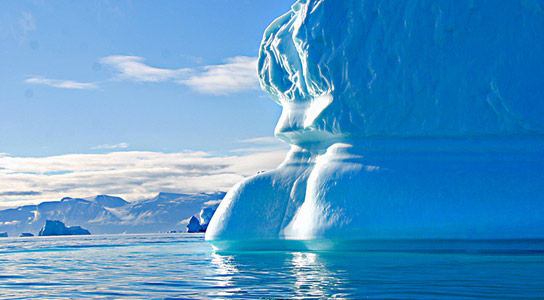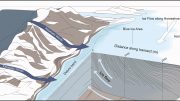
New research reveals that high concentrations of dissolved carbon dioxide in ocean water coincide with increases in atmospheric carbon dioxide and global temperatures at the end of the last ice age.
New research shows that high concentrations of dissolved carbon dioxide in ocean water coincides with rises in atmospheric carbon dioxide and global temperatures at the end of the last ice age, giving scientists valuable insights into how the ocean can affect the carbon cycle and climate change.
New techniques are allowing scientists to understand how carbon dioxide, released from the deep ocean, helped to end the last ice age and create our current climate.
An international team, including Yale paleoclimatologist Michael Henehan, studied the shells of ancient marine organisms that lived in surface waters of the southern Atlantic and eastern equatorial Pacific oceans thousands of years ago. The researchers determined that high concentrations of dissolved carbon dioxide in those waters coincided with rises in atmospheric carbon dioxide and global temperatures at the end of the last ice age.
The findings give scientists valuable insights into how the ocean can affect the carbon cycle and climate change, say the researchers.
A study describing the research appears in the journal Nature. Joint lead authors of the study are Miguel Martínez-Botí of the University of Southampton and Gianluca Marino of the Australian National University. The University of Southampton led the effort.
“This is an exciting time for research into past climates,” said Henehan, who is a postdoctoral associate in the Department of Geology and Geophysics. “Advances in technologies and improvements in our methods have allowed us in this study to show just how critical carbon dioxide release from the oceans was in kicking the Earth out of the last ice age and into the climate state we have today.”
Henehan said Yale scientists are using the same technique to look even further back in time, investigating whether changes in atmospheric carbon dioxide played a role in the mass extinction of species at the end of the Cretaceous period.
Reference: “Boron isotope evidence for oceanic carbon dioxide leakage during the last deglaciation” by M. A. Martínez-Botí, G. Marino, G. L. Foster, P. Ziveri, M. J. Henehan, J. W. B. Rae, P. G. Mortyn and D. Vance, 11 February 2015, Nature.
DOI: 10.1038/nature14155









Carbon footprint has been used today to indicate global warming. Ocean is the great reservoir of carbon, in the sense it contains all the aquatic animals and plants for eons coming up and perishing for billions of years. Thus release of carbon from the ocean is a sure indication which warms up the earth to end the great ice ages. In a sense, nature has used carbon to recycle into warmer atmosphere to get new generations that alternate between ice ages. Thank You.